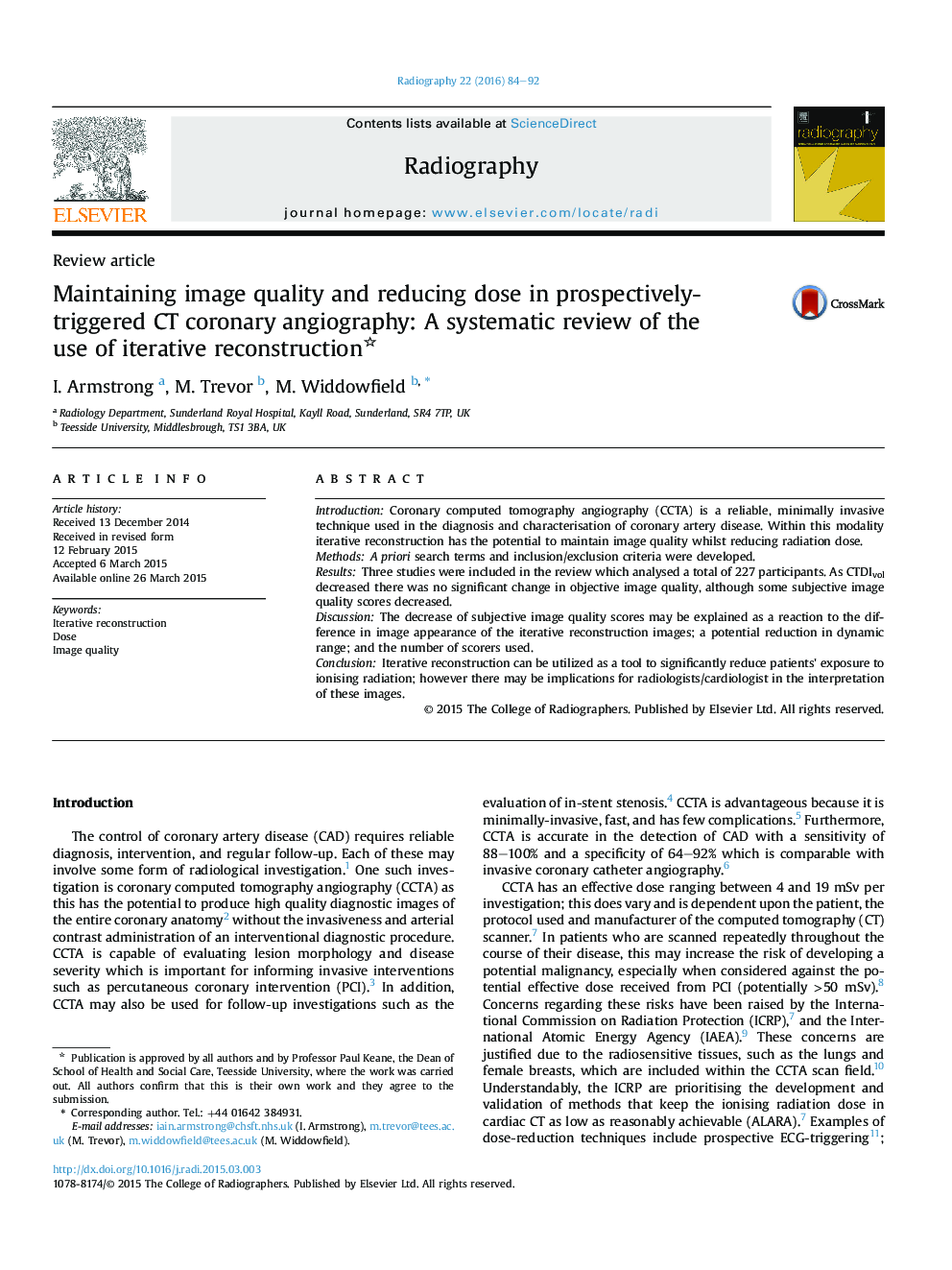| Article ID | Journal | Published Year | Pages | File Type |
|---|---|---|---|---|
| 2737292 | Radiography | 2016 | 9 Pages |
•Explores the use of iterative reconstruction in reducing radiation exposure.•Objective image quality can be maintained with reduced tube current output.•Subjective image quality scores decreases with reduced tube current output.•The appearance of IR images may explain the decrease in subjective image quality.•High quality studies are needed with the addition of the clinical utility.
IntroductionCoronary computed tomography angiography (CCTA) is a reliable, minimally invasive technique used in the diagnosis and characterisation of coronary artery disease. Within this modality iterative reconstruction has the potential to maintain image quality whilst reducing radiation dose.MethodsA priori search terms and inclusion/exclusion criteria were developed.ResultsThree studies were included in the review which analysed a total of 227 participants. As CTDIvol decreased there was no significant change in objective image quality, although some subjective image quality scores decreased.DiscussionThe decrease of subjective image quality scores may be explained as a reaction to the difference in image appearance of the iterative reconstruction images; a potential reduction in dynamic range; and the number of scorers used.ConclusionIterative reconstruction can be utilized as a tool to significantly reduce patients' exposure to ionising radiation; however there may be implications for radiologists/cardiologist in the interpretation of these images.
